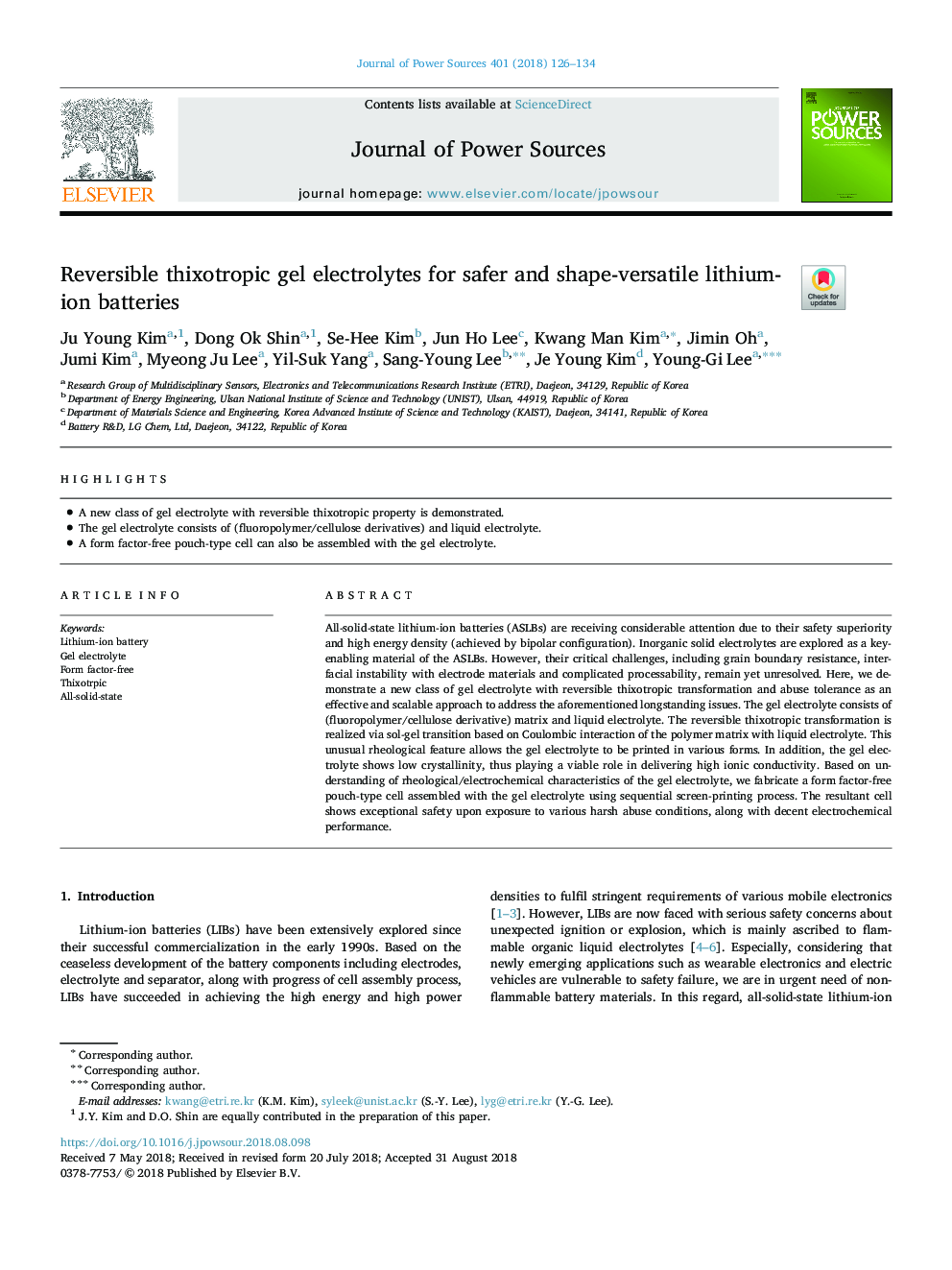| Article ID | Journal | Published Year | Pages | File Type |
|---|---|---|---|---|
| 10141050 | Journal of Power Sources | 2018 | 9 Pages |
Abstract
All-solid-state lithium-ion batteries (ASLBs) are receiving considerable attention due to their safety superiority and high energy density (achieved by bipolar configuration). Inorganic solid electrolytes are explored as a key-enabling material of the ASLBs. However, their critical challenges, including grain boundary resistance, interfacial instability with electrode materials and complicated processability, remain yet unresolved. Here, we demonstrate a new class of gel electrolyte with reversible thixotropic transformation and abuse tolerance as an effective and scalable approach to address the aforementioned longstanding issues. The gel electrolyte consists of (fluoropolymer/cellulose derivative) matrix and liquid electrolyte. The reversible thixotropic transformation is realized via sol-gel transition based on Coulombic interaction of the polymer matrix with liquid electrolyte. This unusual rheological feature allows the gel electrolyte to be printed in various forms. In addition, the gel electrolyte shows low crystallinity, thus playing a viable role in delivering high ionic conductivity. Based on understanding of rheological/electrochemical characteristics of the gel electrolyte, we fabricate a form factor-free pouch-type cell assembled with the gel electrolyte using sequential screen-printing process. The resultant cell shows exceptional safety upon exposure to various harsh abuse conditions, along with decent electrochemical performance.
Related Topics
Physical Sciences and Engineering
Chemistry
Electrochemistry
Authors
Ju Young Kim, Dong Ok Shin, Se-Hee Kim, Jun Ho Lee, Kwang Man Kim, Jimin Oh, Jumi Kim, Myeong Ju Lee, Yil-Suk Yang, Sang-Young Lee, Je Young Kim, Young-Gi Lee,
